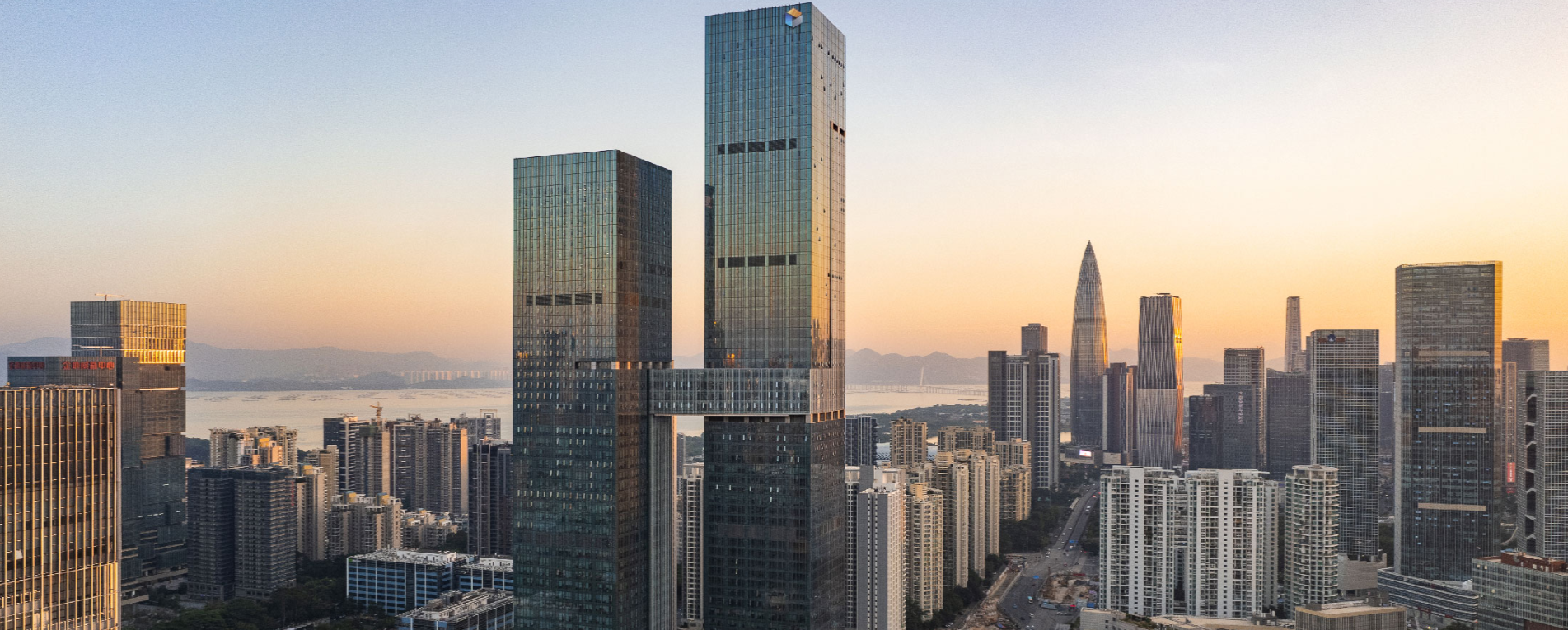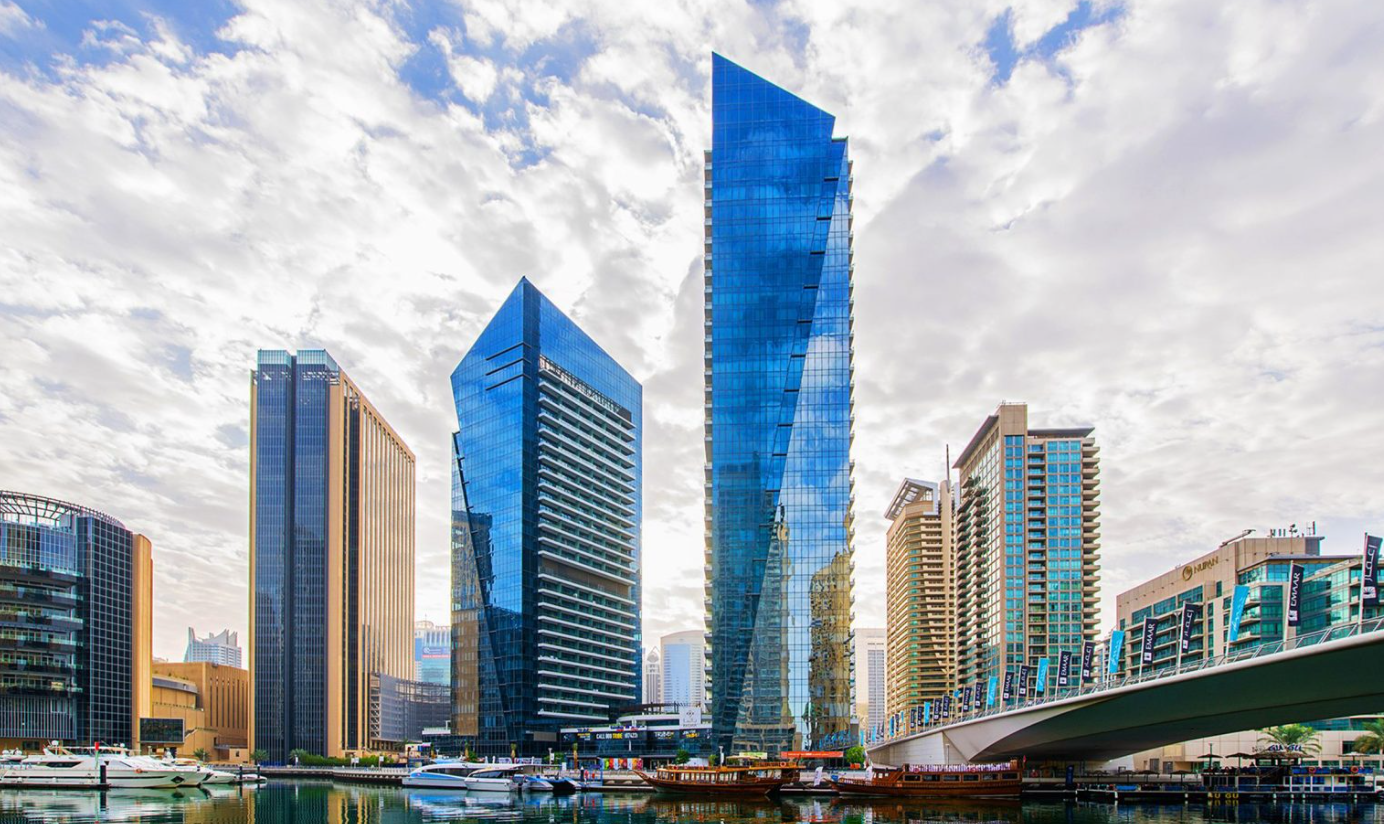Estimated reading time: 4 min
The towers that adorn the urban landscapes of modern cities have an undeniable impact on the overall aesthetic and character of a city. High-rise architecture has become a defining feature of urban skylines, transforming the way we perceive and experience our cities. These majestic structures, with their soaring heights and innovative designs, shape the surrounding cityscape in profound ways, influencing everything from the economy and lifestyle to the cultural identity of a place.
One of the most evident impacts of high-rise architecture is the alteration of the city’s skyline. As contemporary skyscraper designs continue getting higher and higher, they reshape the silhouette of the city and create a mesmerising panorama that is instantly recognisable. Iconic skyscrapers have become synonymous with their respective cities, serving as landmarks and symbols of progress and ambition.
One such example is RMJM’s The New Pingshan Eye. In the fall of 2019, Overseas Chinese Town (OCT) appointed RMJM Shenzhen to design a new landmark gateway development in the Pingshan New District. Located on a site immediately adjacent to the main arterial route from Shenzhen to Pingshan, the design is the centrepiece to the new gateway developments that will define and complete the neighbourhood’s eccentric and historic character. The studio developed the concept of ‘The Eyes of Pingshan’, which in combination form a unique visual feature, one that looks out onto the future of Shenzhen while at the same time appearing to peel back the facades to reveal the building’s within. The eye-shape ornaments, strikingly carved into the upper and central facades of the 250-metre main tower and around the tower entrances, are replicated elsewhere within the scheme and create an unusual visual metaphor for the ‘openness’ theme and its design incorporates several innovative efficiency features. An ‘intelligent’ glass facade that provides both natural ventilation and thermal insulation, as well as specially designed micro-climate air conditioning are amongst the many future-forward and sustainable features.
 New Pingshan Eye, Pingshan, Shenzhen, China
New Pingshan Eye, Pingshan, Shenzhen, China
As highlighted in a previous article, ‘From Skyscrapers to Vertical Cities’, the impact and role of high-rise architecture goes beyond their visual impression. These buildings also have practical implications for the cities they inhabit. With limited land availability in densely populated urban areas, building upward is a logical solution to accommodate growing populations. High-rises allow cities to maximise their use of space, providing room for residential, commercial, and office spaces within a relatively small footprint. By stacking multiple floors vertically, cities can accommodate a larger number of people and businesses without sprawling outward into precious natural or agricultural lands while also fostering economic growth and urban development. This vertical density can also enhance walkability and accessibility, as commercial, residential, and recreational spaces can be conveniently located in close proximity.
Thakher Gardens was previously used as an example of this architectural design, however, RMJM has created several of these urban marvels, such as Silverene, strategically located amongst the master-planned waterfront community of Dubai Marina. RMJM worked closely with the client to develop a high-quality, elegant and easily recognizable development combining twin towers which rise over 150 metres and 120 metres respectively. Each tower geometry is a simple yet elegant rectangle with diagonal edges splayed progressively as the tower ascends and culminates in a pyramidal shaped apex. The development comprises 552 units, as well as a stylish infinity pool and health club.
By also utilising the first two stories of the two buildings as a public space where retail outlets are planned for the future, it shows how high-rise architecture has the potential to create vibrant, mixed-use communities within cities. By integrating residential, commercial, and recreational spaces into a single building or complex, high-rises foster a sense of urban livability. Residents can live, work, and play in close proximity, reducing commuting times and enhancing the quality of life, fostering a sense of community and even social cohesion.
The influence of high-rise architecture extends beyond practicality and community dynamics. These towering structures often become symbols of a city’s aspirations, reflecting its economic power, cultural identity, and architectural prowess. Cities compete to construct the tallest, most innovative skyscrapers, vying for global attention and investment. The construction of landmark buildings not only attracts tourists but also serves as a testament to a city’s ability to shape its own identity.
However, it is crucial to consider the frequently discussed potential drawbacks of high-rise architecture. The density and verticality of these structures can create challenges in terms of traffic congestion, strain on infrastructure, and diminished access to green spaces. Balancing the need for vertical expansion with the preservation of a city’s livability and environmental sustainability is an ongoing challenge that urban planners and architects must address. RMJM is actively taking action to combat these challenges and drawbacks with every new project. The Ningbo Deli Mixed Use Development is a key example of this, showcasing how architects can combine contemporary architecture with expansive green spaces in a cohesive and clean way.
 Ningbo Deli Mixed Use Development, Ningbo, China
Ningbo Deli Mixed Use Development, Ningbo, China
In conclusion, high-rise architecture plays a transformative role in shaping urban skylines. These towering structures alter the visual landscape of cities, serving as landmarks and symbols of progress. They provide practical solutions for space constraints, foster vibrant communities, and contribute to a city’s economic and cultural identity. However, careful planning and consideration are necessary to ensure that high-rise developments enhance the livability and sustainability of cities. By striking a balance between innovation, functionality, and community needs, high-rise architecture can continue to shape cityscapes for the better, creating iconic and thriving urban environments for generations to come.



